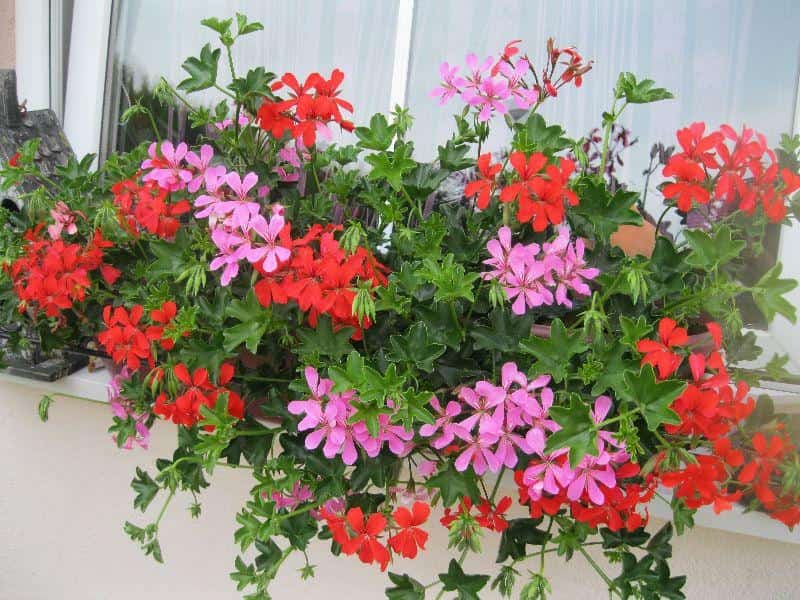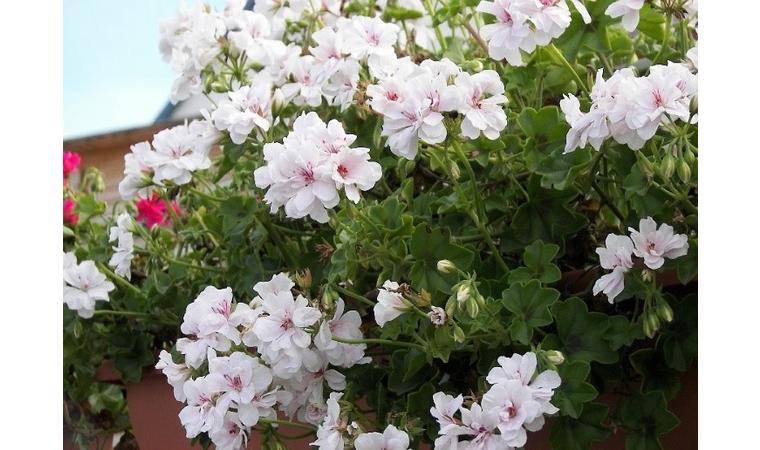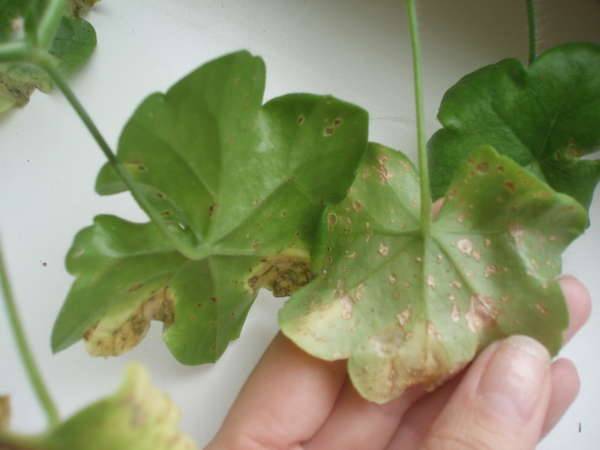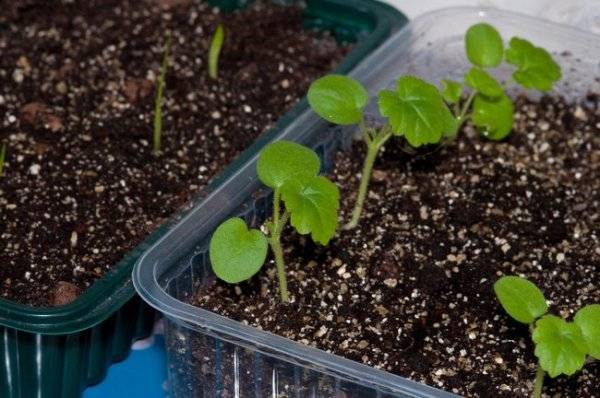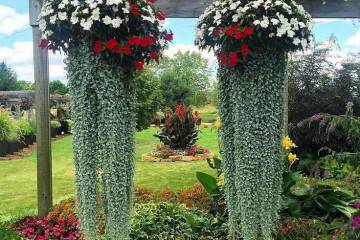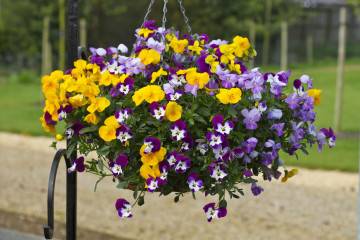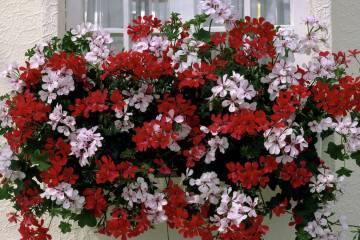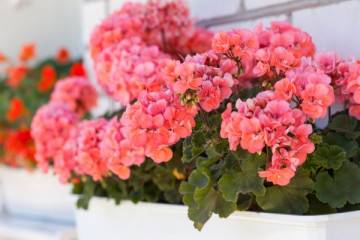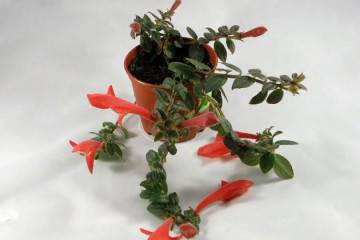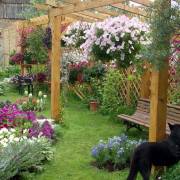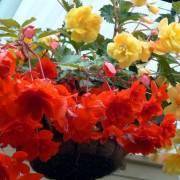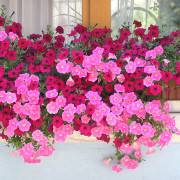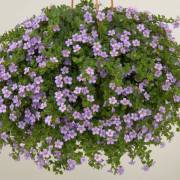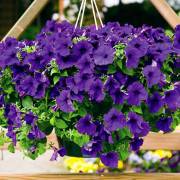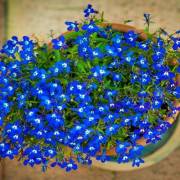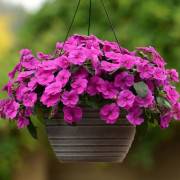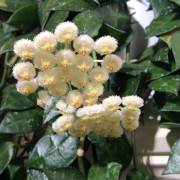Pelargonium ampelous or geranium - growing and care at home
Content:
Ampel geranium, care and cultivation, which can be pinched even by a beginner, is a beautiful, bright flower, unpretentious to care for. It is a graceful plant with flowers of various shades, cascading shoots that reach up to 1 m in length.
Ampel geranium - care and cultivation, pinching at home
Growing ampelous geraniums is easy. The plant does not need specific conditions. All he needs is proper watering, adequate lighting and fertile soil with drainage.
Rules for caring for ampelous pelargonium ivy at home
Ampel Pelargonium home care involves placing a flowerpot with a flower in the right place - without drafts and with sufficient lighting. In summer and winter, looking after geraniums is somewhat different. In the spring, the flower is taken to fresh air for hardening.
Summer care for ampelous geraniums
In the summer, you need to care for geraniums in compliance with the following rules:
- regular, moderate watering;
- timely feeding;
- pruning branches.
You need to water the flower as the soil dries. But it is impossible to overfill the plant, since this will lead to a violation of the aeration of the earth, rotting of the roots and the death of geraniums.
Top dressing during the flowering period of geraniums from the beginning of March to the end of August should be weekly. Fertilizers are selected complex for indoor plants.
In the spring, a fertilizing with a high nitrogen content is recommended. This will promote vigorous growth and abundant flowering throughout the season.
Pruning is needed to make the bush compact. The procedure ensures abundant flowering in the next season.
In the warm season, it is recommended to take geraniums out into the fresh air more often - a terrace, a balcony.
Caring for ampelous geraniums in the winter
In order for a plant to endure the winter well, it needs the following conditions:
- keeping in a cool room with a temperature of 5 ° C to 12 ° C;
- illumination is diffused, but bright enough. Lack of light leads to weakening of leaves and shoots;
- watering is required rare. If geranium is poured abundantly, the roots will begin to rot;
- regular removal of dead foliage, the procedure is carried out using sharp scissors.
Features of growing ampelous geranium on the street
Pelargonium can be grown not only at home, but also outdoors. A delicate, beautiful flower will decorate the garden and flower beds, create bright accents on the site. But, despite the fact that ampelous cultivation in the open air is preferable for pelargonium, in the cold season it must be brought indoors.
Seat selection
Geranium loves well-lit places, without strong winds and drafts. In order for the plant to please with abundant flowering during the season, you need to choose the right soil for it:
- acid reaction - neutral or weak;
- looseness;
- peat is required;
- river sand.
In the fall, when digging up the soil, it is necessary to add mineral fertilizing or humus to it, so that in the next season the flower will receive enough nutrients.
Lighting
Geranium loves diffused but abundant light. But planting a flower in a place where direct sunlight will fall on it is not recommended.
Temperature regime
The most comfortable temperature for ampel geranium is about 15 ° C. During the summer heat, it is recommended to shade the plant.
The most common pests and diseases of the species
Diseases that can occur on the plant:
| Name | Cause | Signs | Treatment |
| Chlorosis | Lack of minerals | White bloom on the leaves - lack of nitrogen, yellowness - sulfur | Fertilization |
| Dropsy | Improper watering, excessive humidity, cold | The appearance of swollen areas on the leaves | Creation of comfortable conditions |
| Powdery mildew | Infectious fungus | Powdery white coating | Fungicide treatment |
| Blackleg | Fungus | Dark spot on the stem near the ground | Not amenable to treatment. The plant is cut below the lesion site |
| Gray rot | Excess nitrogen, lack of fresh air | Brown spots with gray bloom on leaves and stems | Treatment with vitaros, foundationol |
Pests:
| Insect | Signs | Treatment |
| Aphid | Leaf curling and drying | Treatment with drugs mospalin, fitoverm |
| Spider mite | White dots on the leaves, cobweb threads, twisting the sheets inward | Preparations actellik, acarin. Damaged leaves break off |
| Nematode | The appearance of nodes on the roots | There is no cure. The plant is to be destroyed, the soil is dug up |
| Slugs | Holes in the leaves | Hand picking slugs, treating a plant with a slug eater or thunderstorm |
Top dressing of ampelous pelargonium for lush flowering
Recommended purchased products that will contribute to long-term and abundant flowering:
- liquid fertilizers for flowering - Garden Club, agriculture;
- granules and powder - "Clean sheet", "Master Color", ceramics;
- organic - "Gumi Omi", humate. In the composition of bird droppings and juice of plant compost.
In addition to store-bought fertilizers, you can use folk remedies as top dressing:
- iodine. Used after the plant has faded. Iodine promotes active growth of greenery and enhances immunity. Dosage - 2 drops for 1 liter of water. Water 2 times a month in summer;
- hydrogen peroxide. Saturates the root system with oxygen, prevents the appearance of mold. In 1 liter of water, 10 ml of the drug is diluted. Water every week for 1 month.
In addition to lush flowering, feeding will strengthen the plant's immunity, prevent the development of many diseases.
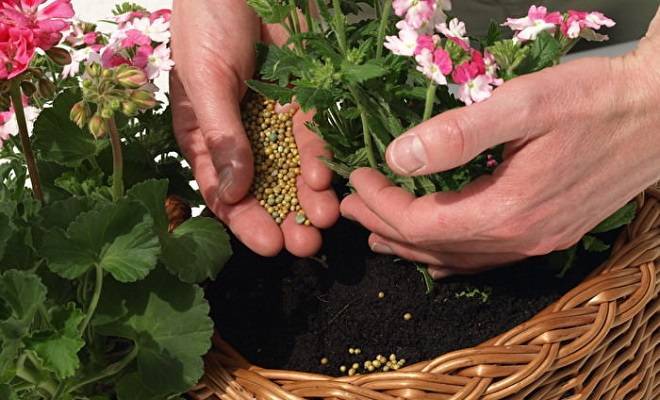
Regular fertilization is the most important condition for the development and flowering of pelargonium
Pruning and shaping the bush
Pelargonium pruning is needed not only to give the bush the desired shape, but also to rejuvenate the plant, stimulate its growth and flowering in the next season.
All about pruning and pinching pelargonium
Pruning is done during a quiet period when the geranium is not going to bloom.Bad leaves and weak branches, the longest shoots are cut off. It turns out a beautiful, low bush.
A pinch is needed to stimulate lush flowering, to awaken dormant buds. The essence of the procedure is to remove the buds with fingers or scissors, which are located at the very top of the bush and at the tips of the shoots.
The procedure slows down flowering, so it must be stopped as soon as the flower takes on the desired shape.
Pelargonium cultivation options
Caring for ampelous geraniums at home and flowering are interrelated things. The splendor of the buds depends on how comfortable the conditions were for the flower. It also depends on the care whether the planted plant can germinate and grow. Pelargonium is planted by seeds or cuttings.
Growing pelargonium from seeds
Algorithm of actions for seed planting of ampelous geranium:
- The seeds must be rubbed with sandpaper or a nail file. Care must be taken not to damage the inner seed.
- Soaking the beans in warm water for 24 hours.
- Placing seeds in a weak solution of potassium permanganate to disinfect them. Dry.
- Moisten the soil, deepen the seeds into it by 5 mm, sprinkle with earth.
- Cover with plastic or plastic wrap and put in a warm place. Required temperature - from 22 ° С to 25 ° С, illumination - diffused, abundant.
Watering the sprouts is required daily.
The soil is suitable purchased for indoor plants or prepared independently. Mix in equal parts:
- peat;
- sand;
- sod land.
Seedlings appear in about 10-12 days, after which they can be transplanted into separate pots.
Growing pelargonium from cuttings
Cutting is an easier way of plant propagation available to the novice gardener. The optimum length of the cutting is from 7 to 12 cm. The cutting is air-dried for 5 hours. The cut site is treated with charcoal or activated charcoal, inserted into the soil, and the earth is compacted. Watering is needed daily.
Rooting takes place after about 3 weeks.
Pelargonium transplant
Transplanting is carried out in the spring, only if the roots have filled the entire pot. The next capacity should be 2 cm more. On average, the transplant is carried out once every 2 years. A flower with roots is taken with a clod of earth and transferred to a new flowerpot.
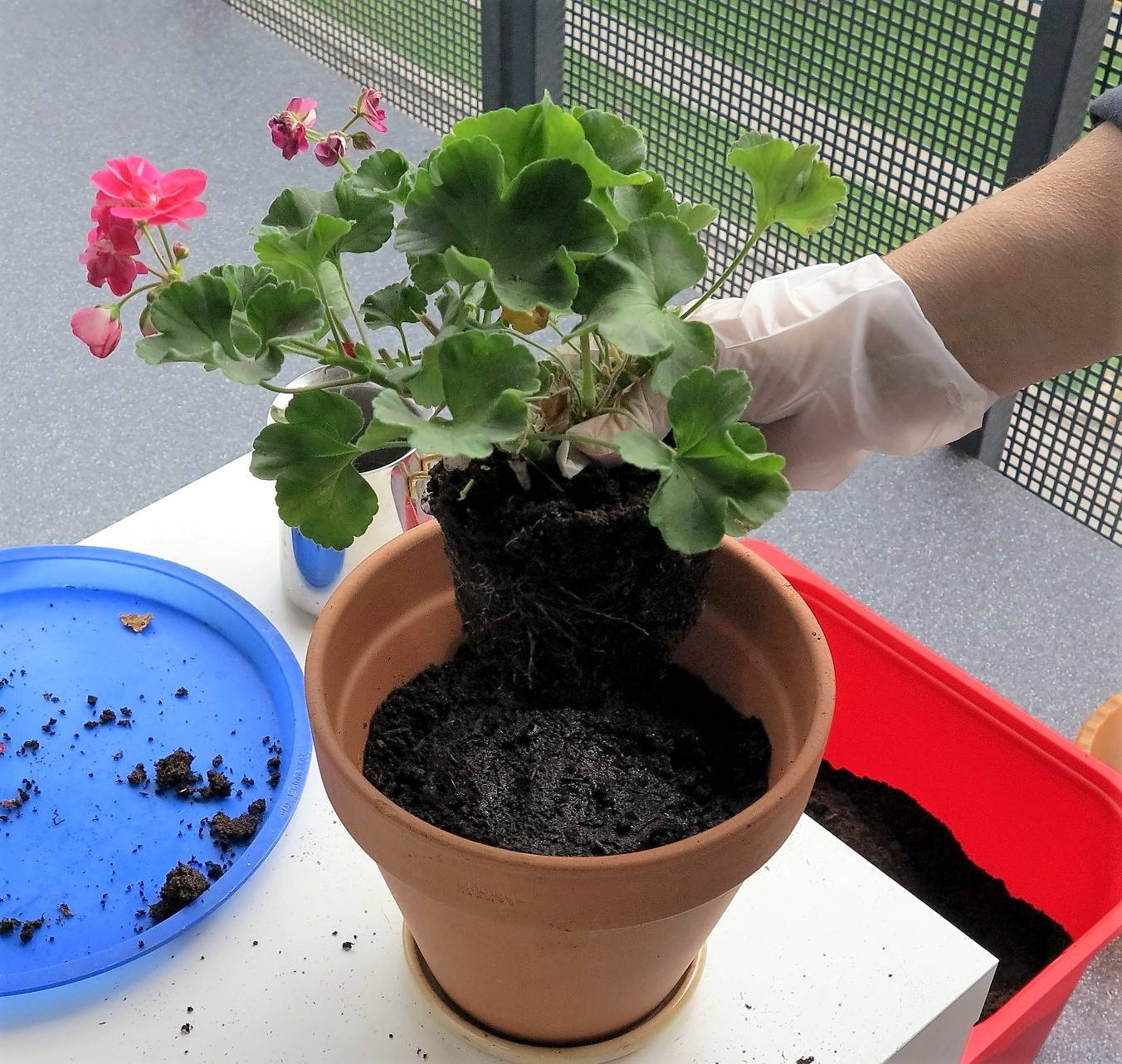
When transplanting on roots, you need to keep the old soil, this will help the plant adapt faster in the new pot
If the plant does not yet need to be transplanted (its roots still fit into the pot), once a year it is enough to replace the top layer of the earth with new nutritious soil.
Ampel geranium is an amazing flower, delicate and refined. He is loved by landscape designers, because with his help you can create incredibly picturesque landscapes on the site. Pelargonium is easy to care for, unpretentious, the bush can be given the desired shape by cutting it.
